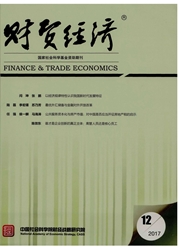

 中文摘要:
中文摘要:
本文通过构建空间杜宾模型(Spatial Durbin Model)对能源结构、交通模式与雾霾污染的关系展开分析。实证显示,雾霾污染区域特征明显,主导东、中、西部地区污染的因素各不相同。对中、西部而言,能源结构是关键,主要体现在三个方面:一是制造业集聚逐渐由东部向中西部地区转移,我国的产业结构调整存在“损人利己”效应;二是以煤为主的能源结构,通过国际间横向对比发现凡是能源结构以煤炭为主的国家,都同样存在雾霾污染严重的问题;三是产能过剩加剧了污染。对于东部而言,交通拥堵以及来自邻近地区的影响是其高污染的重要原因。因此,污染的治理需要联防联控,而在东部地区,打破省域行政界限实现市级层面的联合防控则更为有效。短期看,缓解交通拥堵、减少劣质能源的使用是较为有效的途径,制定符合城市发展的中长期布局规划至关重要;而长期看,发展清洁能源相关技术则更具战略意义。
 英文摘要:
英文摘要:
According to Spatial Durbin Model, this paper studies haze pollution from the perspectives of energy and transportation. We find that the pollution is endowed with obvious regional character, and the reasons are different in China's eastern, central and western areas. For the central and western regions, energy structure is the key which can be explained from three aspects. First, manufacturing agglomeration has been transferred gradually from the eastern to central and western regions, and there exists "harm others to benefit oneself" effect in China's industrial structure adjustment. Second, China's energy structure is characterized by coal. Based on the international comparison, we find that haze pollution appears in all the countries using coal as their main energy source. Third, production capacity surplus has aggravated the pollution. For the eastern area, traffic congestion and the influence from neighbors are the main causes. Therefore, regional cooperation is necessary in the control of haze pollution, especially in China's eastern area. In the short run, relieving the traffic pressure and reducingthe use of inferior energy are effective, and mid and long-term city layout plan is essential. In the long run, developing the technology of clean energy is more meaningful.
 同期刊论文项目
同期刊论文项目
 同项目期刊论文
同项目期刊论文
 期刊信息
期刊信息
